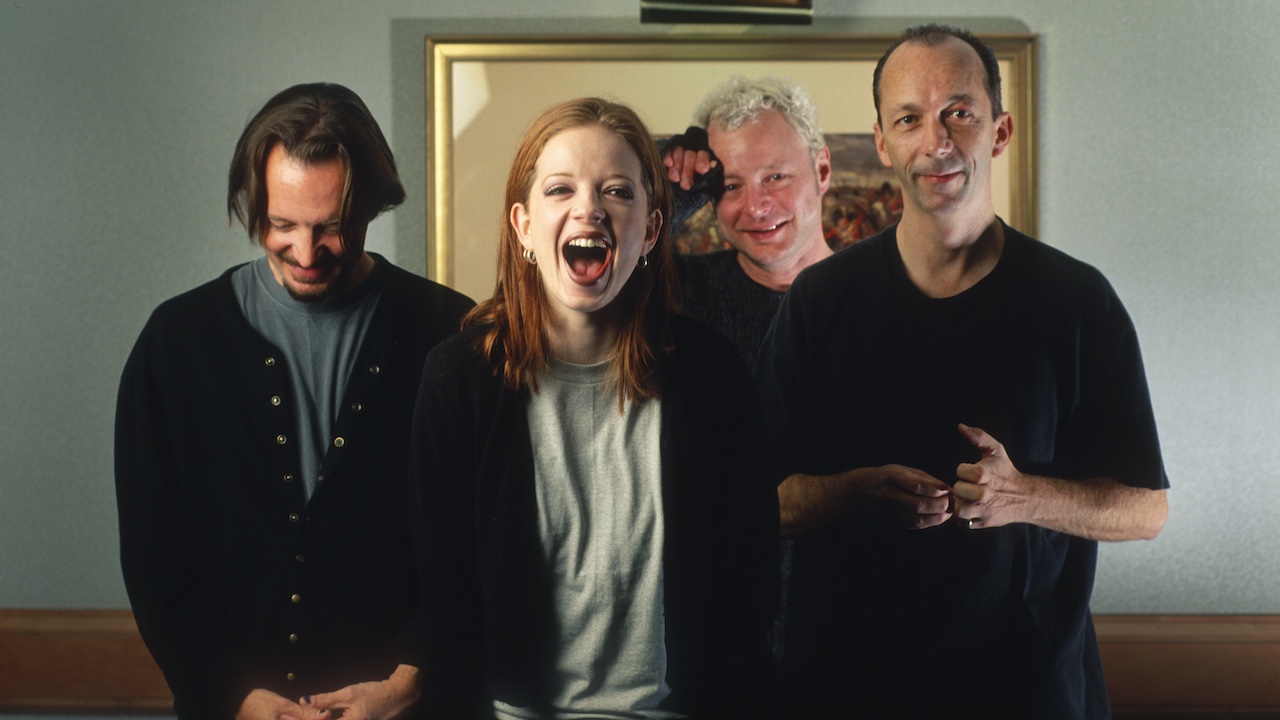“He sent back a really beautiful letter, allowing us the usage of one of his most famous and brilliant songs ever”: the 90s alt-rock anthem that stuck a Beach Boys chorus in the middle of the track and got the seal of approval from Brian Wilson himself
The band’s drummer didn't think they could get away with it, but the band’s drummer was wrong.

No-one, least of all Garbage themselves, had any clue that their self-titled 1995 debut was about to make them one of the biggest new bands on the planet, selling in its millions and spawning a run of classic singles in Stupid Girl, Only Happy When It Rains and Queer. It was the sort of meteoric, unexpected success that might have some bands scratching their heads as to how to repeat the trick, but when Garbage re-emerged in 1998 with second album Version 2.0, they sounded like a band revelling in the high-pressure stakes. As embodied in the record’s lead single Push It, they had their swagger on.
“We were high and brimming with an energy that doesn’t come around very often,” the band’s totemic singer Shirley Manson told this writer a few years ago. “At that time, we’d never any of us been in the position of following up a successful record, this was a brand new thing for all of us and I don’t think we really knew what we were up against, nor did we lack confidence because we knew how difficult it was going to be to climb back up a hill.”
Befitting their new status as one of the most successful bands of the era, writing sessions took place in lush surroundings as they were invited to use a house on Vancouver Island belonging to their label boss Jerry Moss – the M in A&M Records – to begin work on album two. “It was absolutely beautiful,” Manson recalled. “It was an incredible position on the island and we could look out these vast, panoramic windows and whale watch and seal watch and God only knows-watch, it was really a spectacular spot and that’s where we started writing for the second record.”
They had someone there to cater for their every need, a fella by the name of Thaddeus who would set a fire for them in the big room overlooking the water and make them tuna sandwiches when they felt peckish. “It was all very exciting,” Manson marvelled, “because we just come straight off this big first record and we were full of swagger and confidence.”
The night that the band wrote Push It, a seething and urgent rock track that menacingly swayed between its barbed chorus and a melodious hook borrowed from The Beach Boys (more on that later), is forever etched into Manson’s brain. “We were set up in the games room in this beautiful, posh house and our engineer was sleeping in an anteroom next door,” she said. “For some reason, I remember that and we just started jamming, which again was very unusual for us. We’re not a jam band, per se, but this came from a jam and it just appeared. When I look back on it, it really was a song of motivation to myself.”
At the time, Manson thought the lyrics to the song were meant as a rallying cry of encouragement to others. At a distance of over 25 years later, though, she now realises they were a little closer to home than that. “As I’ve gotten older, I realise it is a song for others but I was certainly writing to myself,” she stated. “I was very scared that we were going to fuck up and fumble the ball. I knew we were in an incredible position as a band, as a creative entity to be in a position where you’re following up a record that sold millions all over the world. I didn’t want that to go away. It was such a great gift.”
The reason that the band wanted to release it as the first cut from Version 2.0, Manson explained, is because it was such a “contemporary sounding, esoteric, very unique sounding song,” but it might not have been released at all if Garbage hadn’t got the seal of approval from Beach Boys icon and genius songwriter Brian Wilson.
The latest news, features and interviews direct to your inbox, from the global home of alternative music.
During the recording of Push It, Manson had sung the phrase “don’t worry baby” during the chorus and realised as they continued work on it that a sample of The Beach Boys track of the same name would fit in perfectly. Butch Vig, Garbage drummer and the man behind the production desk on grunge classics Nevermind and Siamese Dream, wasn’t so sure that was a feasible option.
“He was like, ‘I don’t think we can get away with that but, hey, let’s try’,” Manson recalled. But, as it turned out, Garbage were on the same publishing company at the time as Wilson and their publisher forwarded on a note from Vig asking for permission to use the sample from his song. “Much to everybody’s shock, he sent back a really beautiful letter, allowing us the usage of one of his most famous and brilliant songs ever,” Manson said. “To get that kind of vote of confidence from someone that we really hold in highest regard was thrilling to say the least.
It was meant to be, and just the vote of confidence from a great that ensured Garbage marched into the campaign for their second record with their heads held high. It set them up for another round of huge success – like its predecessor, Version 2.0 sold in the multi-millions. Push It was the rip-roaring taster that heralded their second coming.
Niall Doherty is a writer and editor whose work can be found in Classic Rock, The Guardian, Music Week, FourFourTwo, on Apple Music and more. Formerly the Deputy Editor of Q magazine, he co-runs the music Substack letter The New Cue with fellow former Q colleagues Ted Kessler and Chris Catchpole. He is also Reviews Editor at Record Collector. Over the years, he's interviewed some of the world's biggest stars, including Elton John, Coldplay, Arctic Monkeys, Muse, Pearl Jam, Radiohead, Depeche Mode, Robert Plant and more. Radiohead was only for eight minutes but he still counts it.
You must confirm your public display name before commenting
Please logout and then login again, you will then be prompted to enter your display name.

